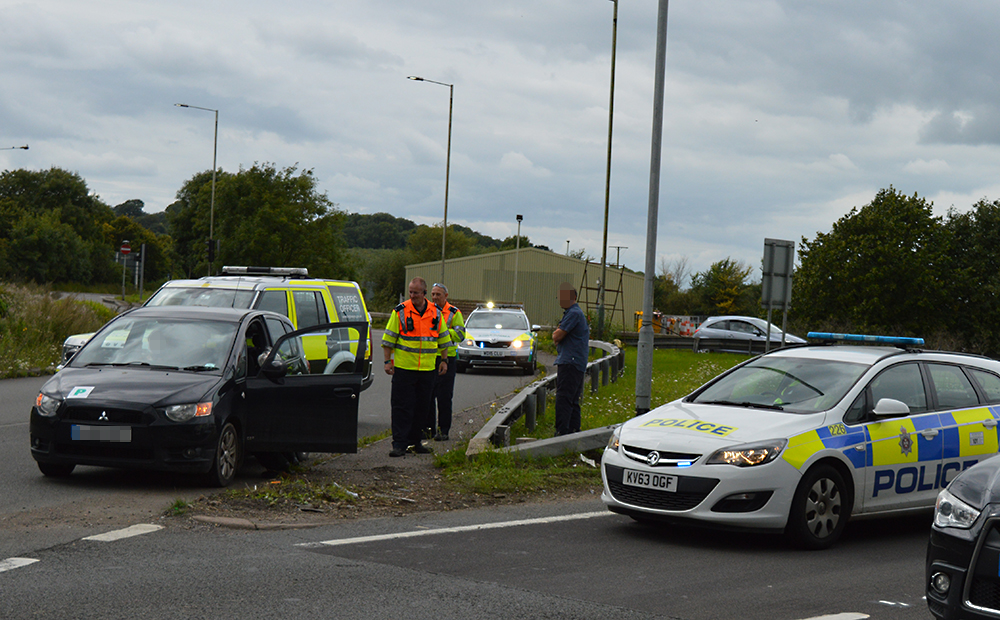Understanding Flash Floods: Flood Warnings And Safety Tips

Table of Contents
Recognizing the Risks of Flash Floods
Geographic Locations Prone to Flash Floods:
Certain geographic areas are inherently more susceptible to flash floods due to their geological characteristics and drainage systems.
- Mountainous regions: Steep slopes accelerate water runoff, leading to rapid increases in stream and river levels. Flash floods in mountainous areas can be particularly devastating due to the force of the water and the potential for debris flows.
- Canyons and gorges: The narrow confines of canyons funnel floodwaters, increasing their velocity and destructive power. Even a relatively small amount of rainfall can cause a flash flood in a canyon.
- Desert washes: While seemingly dry most of the year, desert washes can quickly fill with water during intense rainfall events. The lack of vegetation and permeable soil contributes to rapid runoff.
- Areas with steep slopes: Similar to mountainous regions, areas with steep slopes experience accelerated water runoff, increasing the risk of flash flooding.
- Urban areas with inadequate drainage systems: Impervious surfaces like roads and buildings prevent water absorption, leading to rapid surface runoff and overwhelming drainage systems. This is a significant factor contributing to urban flash floods.
Examples of recent flash flood events highlight the devastating impact in these vulnerable areas. For instance, the 2013 Boulder, Colorado floods, which resulted from intense rainfall in mountainous regions, caused significant damage and loss of life. Similarly, flash floods in desert washes in Arizona frequently cause disruptions and property damage.
Weather Conditions that Increase Flash Flood Risk:
Several weather patterns significantly increase the likelihood of flash floods. Staying informed about these conditions is critical for preparedness.
- Intense rainfall in a short period: High rainfall intensity exceeding the capacity of the land to absorb water is the primary driver of flash floods. Even a few inches of rain in a short time can be enough to cause significant flooding.
- Thunderstorms: Thunderstorms often produce intense, localized rainfall, making them a significant flash flood threat. The sudden and concentrated nature of thunderstorm rainfall can overwhelm drainage systems quickly.
- Rapid snowmelt: During periods of rapid warming, a large volume of snowmelt can rapidly enter rivers and streams, causing a sudden and dramatic rise in water levels. This is particularly true in spring and early summer.
- Dam or levee failures: The failure of a dam or levee can trigger catastrophic flash floods downstream, releasing enormous volumes of water in a short period. Such events often require large-scale evacuations.
Regularly monitoring weather forecasts and alerts from sources like the National Weather Service (NWS) is crucial for assessing the risk of flash floods in your area. Pay close attention to rainfall forecasts, thunderstorm warnings, and flood advisories.
Understanding Flash Flood Warnings and Alerts
Effective response to flash floods relies on understanding and reacting to warnings and recognizing visual cues.
Different Types of Warnings:
The NWS utilizes a tiered warning system to inform the public about the risk of flash floods:
- Flash Flood Watch: Conditions are favorable for flash flooding. Stay informed and be prepared to act.
- Flash Flood Warning: Flash flooding is occurring or is imminent. Take action immediately to protect yourself and your property.
- Flash Flood Emergency: A particularly dangerous and life-threatening flash flood is happening. Immediate action is critical to save lives.
Understanding these distinctions is vital. A watch signifies potential danger, while a warning indicates immediate threat. An emergency necessitates urgent evacuation.
Receiving Official Warnings:
Reliable sources for flash flood warnings and alerts include:
- Weather apps: Many weather apps (like AccuWeather, The Weather Channel) provide real-time alerts based on your location.
- NOAA Weather Radio: This dedicated radio service provides 24/7 weather information, including flash flood warnings.
- Local news: Television and radio stations often broadcast urgent weather alerts, including flash flood warnings.
- National Weather Service website: The NWS website offers detailed forecasts and warnings for your area.
Recognizing Visual Warning Signs:
In addition to official warnings, be observant for visual signs that could indicate an impending flash flood:
- Rapidly rising water levels: A sudden and significant increase in water levels in streams, rivers, or normally dry areas is a critical warning sign.
- Strong currents: Strong and fast-moving currents indicate a significant flow of water, posing a serious threat.
- Debris flowing in the water: Logs, branches, and other debris carried by floodwaters signal the power and speed of the current.
- Unusual sounds: A roaring or rushing sound of water indicates a surge of water exceeding normal levels.
- Sudden changes in water color: Muddy or discolored water often indicates sediment being carried by fast-moving floodwaters.
Recognizing these visual cues can provide crucial early warning, allowing for timely evacuation.
Safety Tips During a Flash Flood
Immediate Actions During a Flash Flood:
Your immediate actions during a flash flood are paramount to your safety.
- Move to higher ground immediately: This is the single most important action. Get to high ground as quickly and safely as possible.
- Avoid driving or walking through flooded areas: Floodwaters can be deeper and faster moving than they appear, easily sweeping away vehicles and people. The common phrase "Turn Around, Don't Drown" is critical to remember.
- Never attempt to cross a flowing stream on foot or in a vehicle: Even seemingly shallow water can be incredibly powerful and dangerous.
- Seek shelter in a sturdy building: If you cannot immediately reach higher ground, find a sturdy building and stay away from windows.
Underestimating the power of floodwaters is a leading cause of flash flood fatalities. The force of the water can be overwhelming, even in seemingly shallow areas.
Protecting Your Home and Property:
While personal safety is paramount, taking steps to protect your home and property can minimize losses.
- Move valuables to higher floors: Move important documents, electronics, and other valuable items to upper floors or a safe location.
- Bring outdoor furniture inside: Secure or bring inside any loose items that could be swept away by floodwaters.
- Disconnect electrical appliances: Turn off and disconnect electrical appliances to prevent electrocution.
- Consider sandbagging if time permits: If time allows, sandbagging around vulnerable areas can help protect your home from flooding.
- Understand your flood insurance: Many homeowners' insurance policies do not cover flood damage, requiring separate flood insurance. Check your coverage to prepare adequately.
Post-Flash Flood Safety Measures:
After the floodwaters recede, several crucial safety steps remain.
- Check for structural damage: Carefully inspect your home and property for any structural damage, including foundation cracks or weakened supports.
- Avoid contact with floodwater: Floodwater can be contaminated with sewage, chemicals, and other hazardous materials. Avoid contact at all costs.
- Report damage to authorities: Contact your local authorities to report any damage to your property or infrastructure.
- Be aware of potential hazards: Be cautious of downed power lines, damaged roads, and other potential hazards.
Conclusion
Flash floods are a serious threat, but understanding the risks, heeding warnings, and taking appropriate safety measures significantly reduces the danger. This article has highlighted the importance of recognizing high-risk areas, understanding the different warning levels, and acting quickly when a flash flood threatens. Remember the key takeaways: monitor weather forecasts, recognize warning signs, prioritize personal safety, and protect your property where possible. Being prepared is the best defense against the dangers of flash floods. Stay informed about flash flood risks in your area and prepare a family emergency plan. Learn more about flood safety and preparedness by checking your local weather forecasts regularly and familiarizing yourself with evacuation routes. Remember, when it comes to flash floods, your safety is paramount.

Featured Posts
-
 Sorusturma Altindaki Doert Oyuncu Kuluebuen Krizi Derinlesiyor
May 25, 2025
Sorusturma Altindaki Doert Oyuncu Kuluebuen Krizi Derinlesiyor
May 25, 2025 -
 Serious M56 Motorway Collision Car Overturn And Casualty
May 25, 2025
Serious M56 Motorway Collision Car Overturn And Casualty
May 25, 2025 -
 Gold Price Surge Trumps Eu Threats Fuel Trade War Fears
May 25, 2025
Gold Price Surge Trumps Eu Threats Fuel Trade War Fears
May 25, 2025 -
 Atletico Madrid In Geri Doenuesue Taktiksel Degisimler Ve Oyuncular
May 25, 2025
Atletico Madrid In Geri Doenuesue Taktiksel Degisimler Ve Oyuncular
May 25, 2025 -
 Craig Mc Ilquhams Memorial Service A Sunday Remembrance For The Hells Angels
May 25, 2025
Craig Mc Ilquhams Memorial Service A Sunday Remembrance For The Hells Angels
May 25, 2025
